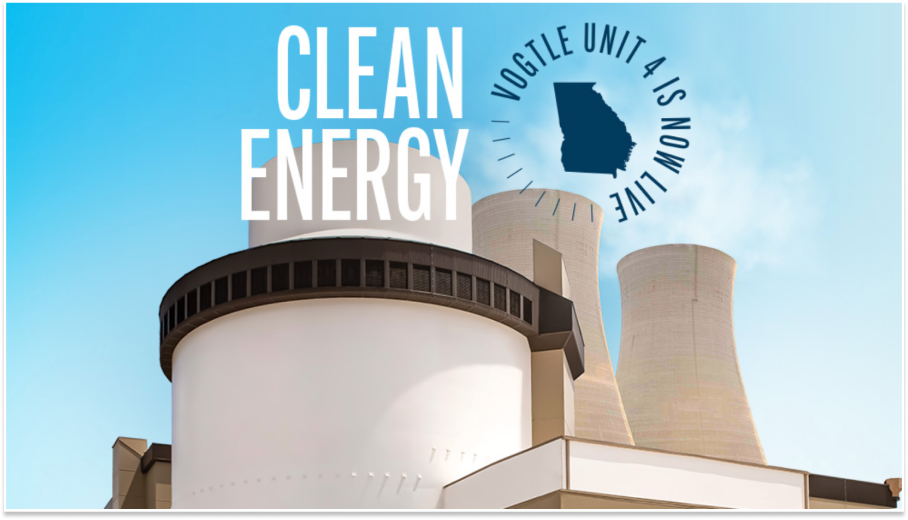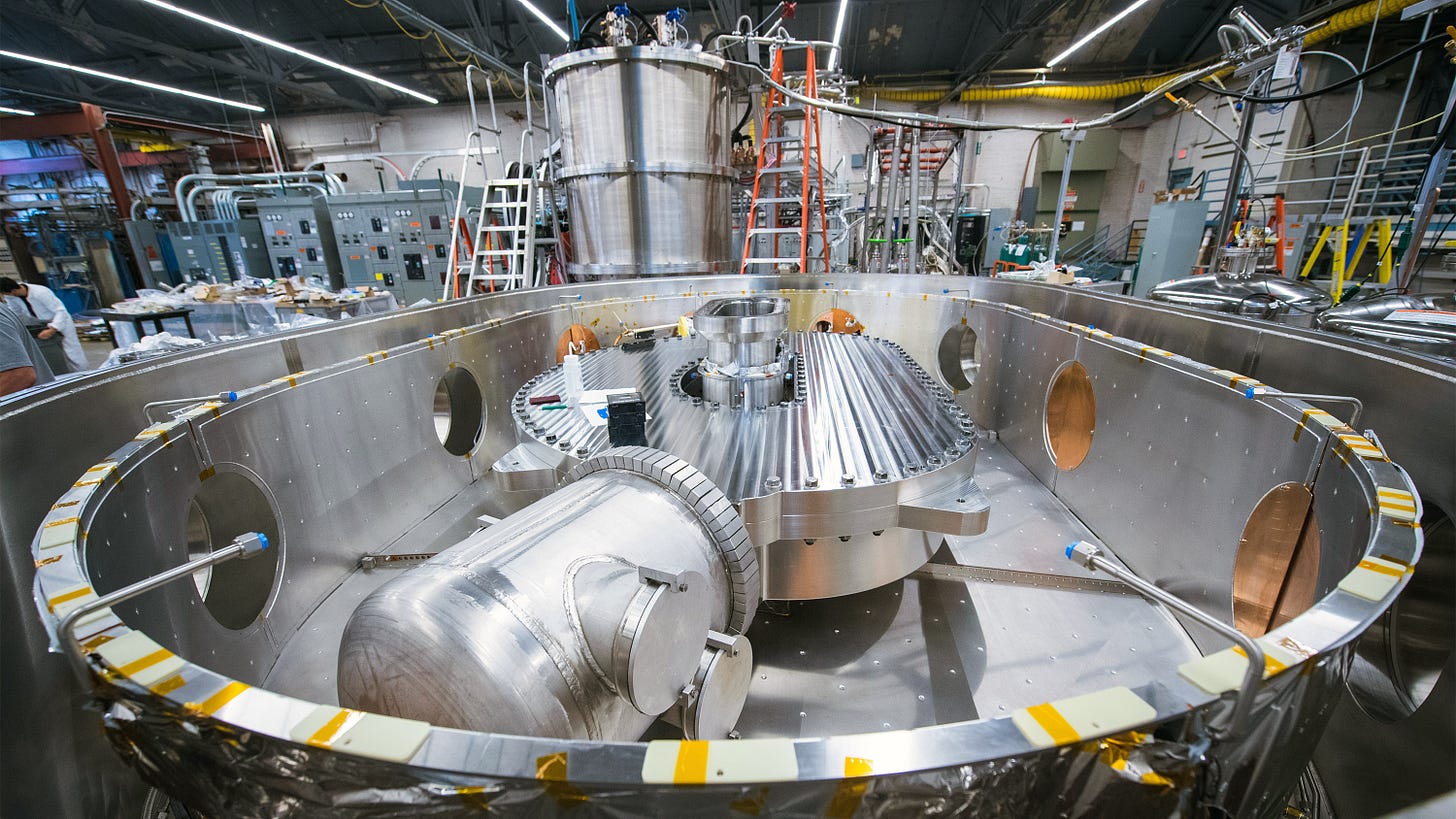

Weekly Dose of Optimism #92
source link: https://www.notboring.co/p/weekly-dose-of-optimism-92
Go to the source link to view the article. You can view the picture content, updated content and better typesetting reading experience. If the link is broken, please click the button below to view the snapshot at that time.

Weekly Dose of Optimism #92
Icons, Georgia Nuclear, Fusion Magnets, Solar Satellites, mRNA Cancer Vaccines, Extropic, Nanotechnology
Hi friends 👋,
Happy Friday and welcome back to our 92nd Weekly Dose of Optimism.
Action packed week we’ve got for you: an iconic product launch, bunch of energy stuff, cancer vaccines, inside peak at one of tech’s hottest startups, and a primer on nanotechnologies. Just another week in the office for the optimists.
Let’s get to it.
From Airbnb
Airbnb continues to move up Maslow’s Hierarchy.
At first, the service allowed its customers to secure their most basic shelter needs — maybe that was just renting an air mattress inside a host’s tiny SF apartment. Once it nailed that, the company moved onto safety — building out a reviews and trust system that would make guests feel safe sleeping on a stranger’s couch. Once safety was taken care of, the company focused on building a community of guests and hosts and, importantly, making renting an Airbnb cooler than getting a hotel room — imagine taking a trip to Austin, Texas in 2019 and not staying in an Airbnb.
Icons is Airbnb’s Self-Actualization play. With the fundamentals taken care of, Airbnb is now helping you build the most memory-generating, extraordinary experience of your lifetime. Airbnb’s Brian Chesky unveiled the company’s first 11 Icons in a keynote presentation on Wednesday, ranging from a floating recreation of the house in Up to a sleepover in the Ferrari Museum.
Many people have pointed out that Airbnb should focus on lowering prices and fees (which, yeah, would be great) instead of launching limited edition stunt experiences, but I think that’s a pretty lame take. One view of tech is that its purpose is to move us up Maslow’s Hierarchy — cover all of our basic needs, make the world safer, bring us together so that ultimately, we can focus on self-actualization— to work on the things we want to work on and to create the experiences we’ve only ever dreamed of.
Who knows, maybe I’m over thinking this and Icons was just a marketing stunt (which, hey, it worked), but I do think tech getting more whimsical is a sign of progress.
(2) Vogtle Unit 4 enters commercial operation
Georgia Power declared today that Plant Vogtle Unit 4 has entered commercial operation and is now serving customers and the State of Georgia. The new unit, which can produce enough electricity to power an estimated 500,000 homes and businesses, will provide reliable, emissions-free energy to customers for at least 60 to 80 years.
OK, back the serious tech stuff. Georgia’s Vogtle Electric Generating Plant, a nuclear power plant, lit up its fourth and final unit. The first two units went operational back in the 80’s, the third unit was completed last year, while the fourth unit — over a decade in the works — entered commercial operation early this week. The four units in total required capital investments of over $30B to get live and were deeply over budget and over schedule, but now Georgia has its source of clean, reliable energy situated for the rest of the century.
Getting Vogtle 4 online is a win, but now that it’s no longer under construction, there are no new nuclear plants in development in the US. That’s the wrong move. While Vogtle was too slow and too expensive, we now have people and organizations with recent nuclear development experience sitting around letting their learnings go to waste. We need to put those people back to work and build a lot more nuclear before we forget how (again).
(3) MIT’s superconducting magnets are ready for fusion
David L. Chandler for MIT Technology Review
A detailed study confirms that record-setting magnets built by the Plasma Science and Fusion Center and Commonwealth Fusion Systems meet the requirements for an economical, compact power plant.
The funny/frustrating thing about nuclear fission is that by the time the U.S. gets its shit together on it, we may no longer even need it — thanks to nuclear fusion. The feasibility of commercial nuclear fusion has increased in just the last couple of years, with laboratory breakthroughs like Q>1 back in 2022 and a number of well-resourced company’s, like Commonwealth, taking serious swings at the opportunity. And a big opportunity it is: achieving commercially viable nuclear fusion means we’ll have an infinite source of cheap, clean energy. Fusion = Abundance.
This week, MIT's Plasma Science and Fusion Center and Commonwealth Fusion System jointly announced research on a new magnet made from high-temperature superconducting material that achieved a field strength of 20 tesla. The new magnet utilizes a material known as REBCO (rare-earth barium copper oxide), which operates at slightly higher temperatures than previous materials and allows for more compact and energy-efficient designs. This magnet's record-breaking field strength is crucial for effectively containing hydrogen plasma, which is necessary for achieving and sustaining the conditions required for nuclear fusion.
I have no actual idea what a world with fusion will look like, but I imagine we’ll all be self-actualizing our days away in Airbnb Icons.
(4) South Korea plans 120 GW space solar project
Lior Kahana for PV Magazine
Two Korean research institutes are designing a space solar power satellite project with the aim of providing approximately 1 TWh of electricity to the Earth per year. The proposed system would use 4,000 sub-solar arrays measuring 10 metres × 270 metres and comprising thin film roll-out, with a system power efficiency of 13.5%.
But if fission never gets its shit together and fusion never exits the lab, then a team of South Korean researchers have another plan in mind. The Korean Space Solar Power Satellite (K-SSPS) project involves developing a system to transmit solar power from space using a large satellite. This system includes a 10,000-ton satellite that transmits power via microwaves to Earth, which can generate significant electricity, potentially exceeding South Korea's current consumption. The plan is still very far off — the researcher proposed a completion date of 20250 — but the concept is promising. Let’s launch massive solar panels constructs into orbit closer to the sun and not obstructed by clouds and other environmental barriers, and then beam that energy back down to earth.
(5)mRNA Cancer Vaccine Reprograms Immune System to Tackle Glioblastoma
Inside Precision Medicine via Eli Dourado
Researchers at the University of Florida report they have developed an mRNA cancer vaccine that quickly reprograms the immune system to attack glioblastoma in a first-ever human clinical trial of four adult patients.
Another big win for mRNA and for humans!
Researchers at the University of Florida have developed a personalized mRNA cancer vaccine that shows immense promise in the battle against glioblastoma, the most aggressive and lethal type of brain tumor. In a first-in-human trial of four adult patients and a separate study involving 10 dogs with spontaneous brain tumors, the vaccine quickly reprogrammed the patient’s immune system to attack the cancer.
The vaccine uses the patient's own tumor cells to create a personalized treatment delivered via engineered lipid particles. These particle clusters recruit the immune system to rapidly shift the tumor environment from immunologically "cold" to "hot" within 48 hours. This allows the activated immune cells to attack the cancer.
While it's still early, the results so far are extremely encouraging. In the canine study, the treated dogs had a median survival of 139 days compared to the typical 30-60 days. The researchers are now planning an expanded clinical trial in both adult and pediatric brain cancer patients to further validate the findings and determine optimal dosing.
If proven safe and effective, this personalized mRNA vaccine approach could represent a paradigm shift in how we treat not only glioblastoma, but potentially other difficult-to-treat cancers as well. By harnessing the power of the body's own immune system in a targeted way, we may finally have a potent new weapon in the long fight against one of the deadliest forms of cancer. While there is still a ways to go, these initial results provide a much-needed ray of hope for patients and families impacted by this devastating disease. Biology is magic.
(6) The Next Era of Computing | Extropic
From Jason Carman’s S3
Not Boring Capital portfolio company Extropic is working on developing "physics-based computing" hardware designed specifically for AI. They are pioneers of thermodynamic AI compute. The company’s founder, Guillaume Verdon, is one of the most enthusiastic articulators of why technological progress is a good thing. Listening to the guy talk about his work, you can tell he feels an innate obligation to push tech and civilizational progress forward. If Extropic accomplishes its mission, it could be a trillion dollar company (faster, more efficient AI compute is a lucrative value prop), but it would also have, what Guillaume called “a maximal impact on our ability to scale civilization to the stars.”
Jason Carman of S3 got an exclusive first look inside what Extropic is building. Watch this weekend.
Bonus:Nanotechnology: A Primer for Policymakers
J. Storrs Hall for Abundance Institute
The machines we invent today to maintain a healthy body weight and prevent cancer may well be used tomorrow to adapt to prolonged weightlessness and resist the higher levels of radiation outside Earth’s magnetic field. Closed-cycle life support and food technologies developed in aid of lunar or Martian colonies might well aid in preserving the natural environment on Earth. The list of such dual-use technologies seems practically limitless, and fertilization can go both ways. The challenges of space travel might provide an attractive focus.
Packy here. A week or so ago, a new nonprofit called Abundance Institute popped into my feed. Its mission — creating space for emerging technologies to grow and thrive — is one that we fully support, and the team it’s pulled together in service of that mission is stacked. Among others, it includes three Not Boring favorites: Eli Dourado (Chief Economist), Louis Anslow (of Pessimists Archive), and the 🐐: Where is My Flying Car? author J. Storrs Hall.
Hall came out swinging with an article on nanotechnology, or more specifically since the term has been bastardized, Atomically Precise Machinery (APM). He describes APMs as “atomically precise, self-replicating, machine-phase manufacturing technology,” before illustrating all of the things that we might do with such a technology. What he describes is orders of magnitude improvements across manufacturing, robotics, construction, energy, transportation, nuclear, the environment, nanomedicine, and space.
Because Abundance Institute exists to shape policy, he also envisions potential consequences of APMs — accidents, war, unintended consequences, and unknown unknowns — before arguing that we must move forward, with sensible regulation.
You should read the piece because the future Hall describes is going to be awesome, and I think the odds of that awesome future went up a little bit now that Abundance Institute is on the job.
We’ll be back in your inbox on Tuesday.
UNC’s Pi Kappa Phi has now raised over $400,000 of frat funds to throw a “Defend the Flag” party. If you need us this weekend, you’ll know where to find us.
Thanks for reading,
Packy + Dan
Recommend
About Joyk
Aggregate valuable and interesting links.
Joyk means Joy of geeK





